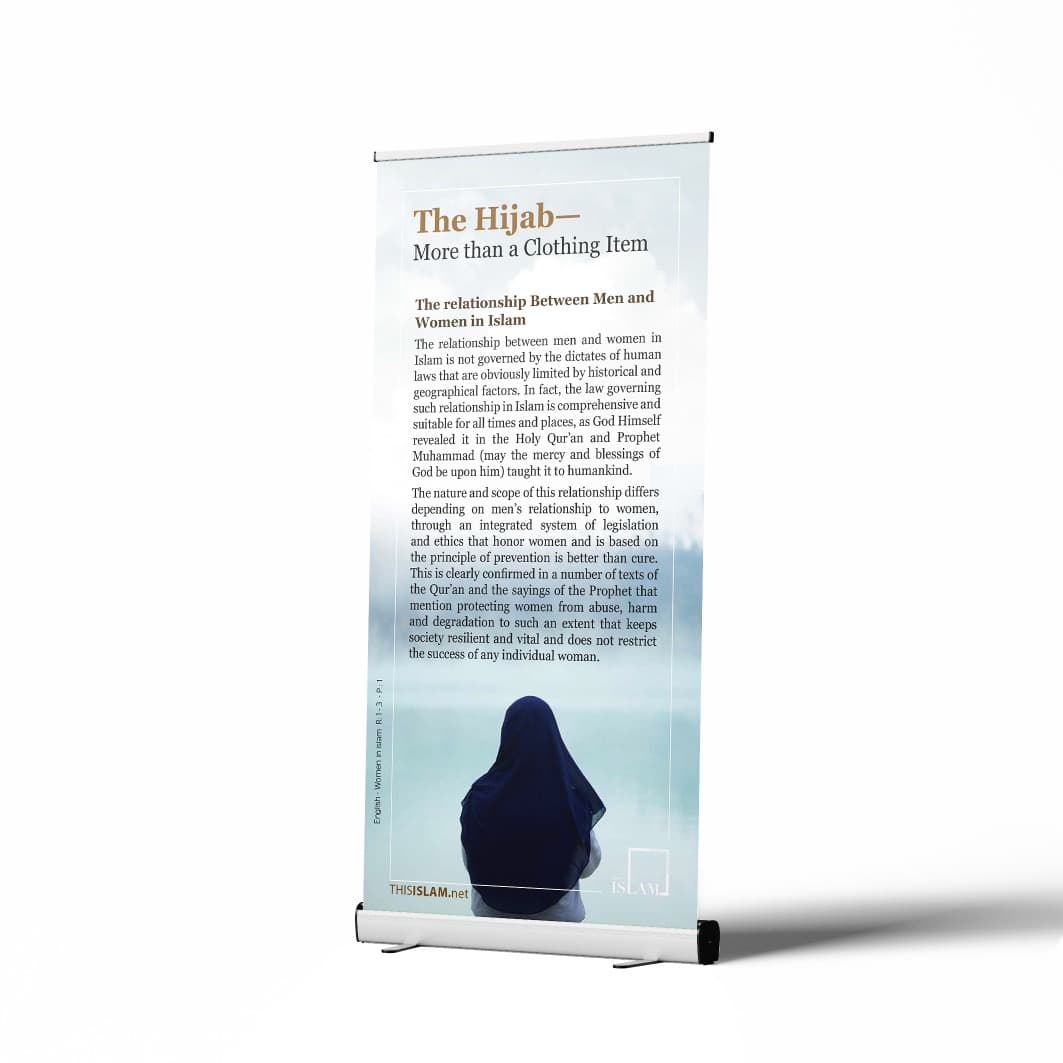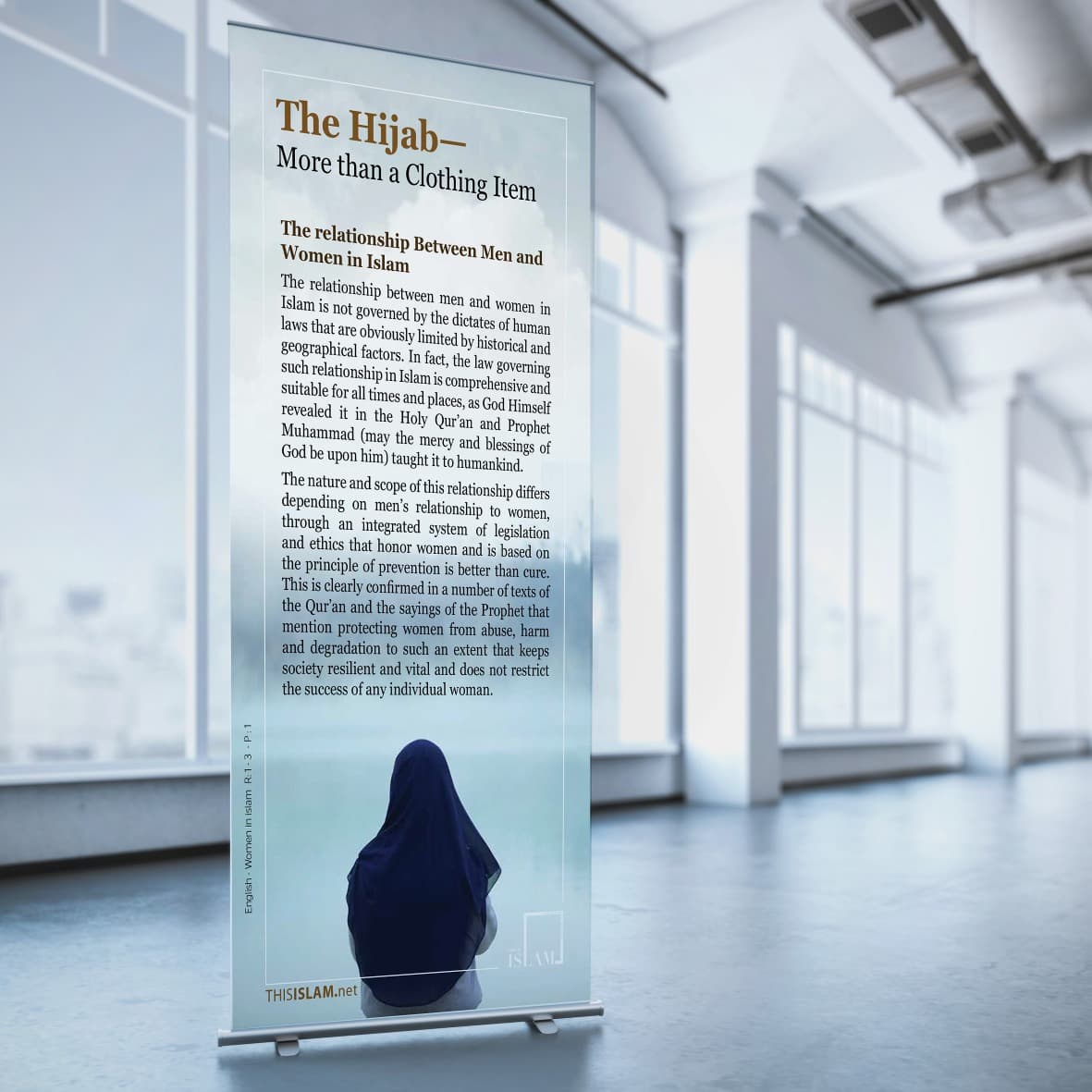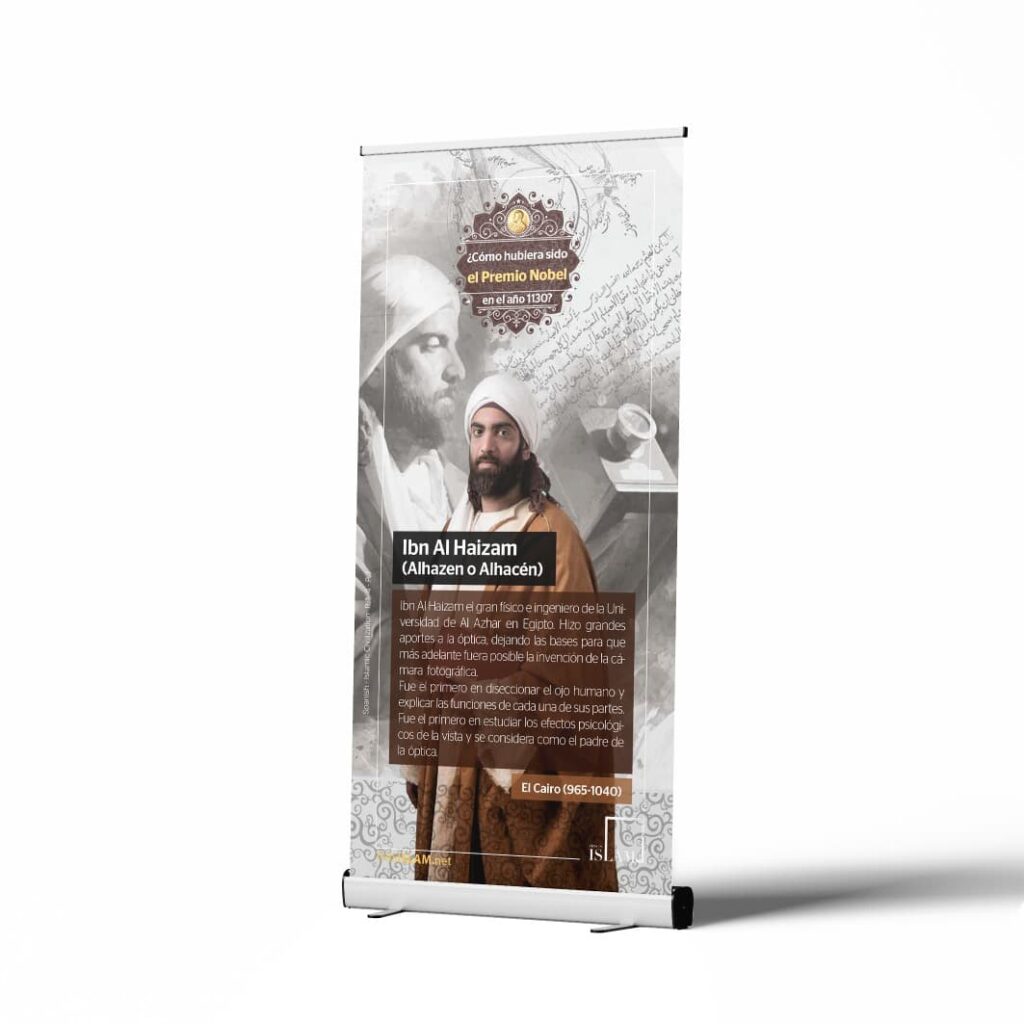Roll up: 1
The Hijab—More than a Clothing Item
The relationship Between Men and Women in Islam
The relationship between men and women in Islam is not governed by the dictates of human laws that are obviously limited by historical and geographical factors. In fact, the law governing such relationship in Islam is comprehensive and suitable for all times and places, as God Himself revealed it in the Holy Qur’an and Prophet Muhammad (may the mercy and blessings of God be upon him) taught it to humankind.
The nature and scope of this relationship differs depending on men’s relationship to women, through an integrated system of legislation and ethics that honor women and is based on the principle of prevention is better than cure. This is clearly confirmed in a number of texts of the Qur’an and the sayings of the Prophet that mention protecting women from abuse, harm and degradation to such an extent that keeps society resilient and vital and does not restrict the success of any individual woman.
Roll up: 2
Why Does Islam Command Women to Wear the Hijab before Non-Mahram Men?
So that they would carry out their duties in life and society in various scientific and academic fields in the best possible manner while preserving their modesty and dignity.
In order to lessen chances of temptation and sexual seduction, and to remind men who happen to look at women that they are dealing with people who enjoy the same cultural and academic privileges as they do, and not as mere commodities and or sex objects.
Therefore, the veil, or hijab, for Muslims is not a mere clothing item; it is also a comprehensive system of divine legislation and ethics governing the relationship between men and women, whether they were on a farm in the sixth century CE or are currently scientists and researchers in nanoscience laboratories in the twenty first century.
Many of those who criticise the modest Muslim woman’s style of dress, or hijab, fail to perceive that most traditional depictions of the greatest women in history, including that of the Virgin Mary, show them clad in veils that are very similar to the Muslim veil.
Roll up: 3
Relationships at Work and at Educational Institutions
If a man is not the husband of a certain woman or any of her close relatives, such as her father, her son, her brother, her paternal uncle, her maternal uncle, and her nephew and her sister, then he is subject to a set of ethical rules that he must observe. They include the following:
1. Lowering the Gaze
God commands both men and women to lower their gaze in the presence of each other by not looking at them in such a way as to incite sexual desire, for lowering the gaze paves the way to modesty and serves to safeguard one’s honour, while lustful looks generally pave the way to sins, as the Qur’an states, “Enjoin believing men to turn their eyes away from temptation and to preserve their chastity. This will make their lives purer. God is well aware of what they do.” (Qur’an, 24:30).
2. Avoiding Private Seclusion with Non-Mahram Women Altogether
The Arabic word khalwah denotes the state of being alone with a woman who is not one’s wife (or any female a man is not allowed to marry), in a place where no one can see them. Islam strictly prohibits this, as it might lead to seduction. In fact, this has been proven by instances of sexual harassment and rape that have inundated the media today.
3. Wearing The Hijab (the Modest Muslim Women’s Style of Dress)
God commands women, but not men, to wear the hijab because women in particular enjoy a natural beauty and attraction that can easily tempt men into sinful acts more than vice versa. It is for this reason that, throughout history, since ancient times up to this day women are more often than not exploited and used to satisfy men’s desires, and not the other way round. This is obvious in the manner women are objectified in the different types of mass media today.
Roll up: Size: 400cm x 250cm












Reviews
There are no reviews yet.